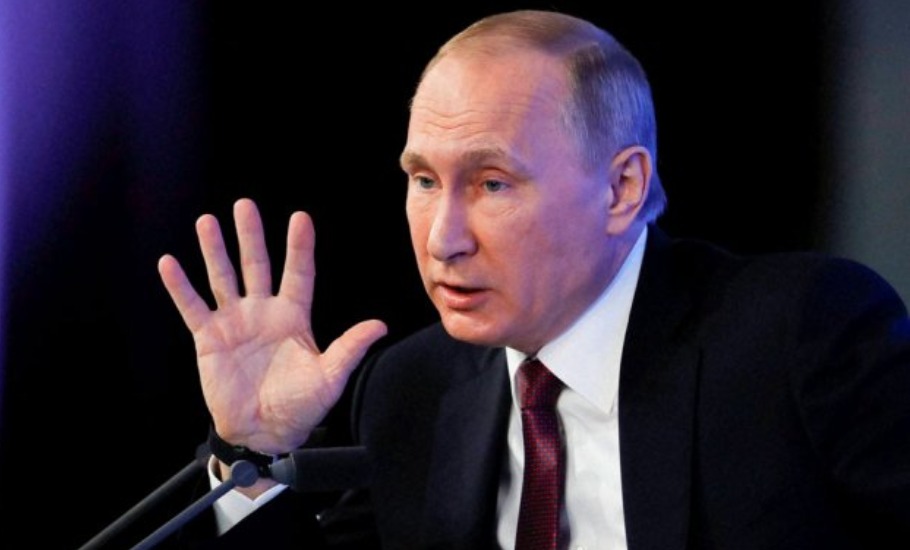
Explainer: What’s NATO, and why does Ukraine want to join?

International concern about Russia’s provocative stance towards Ukraine continues, even as Russian President Vladimir Putin denies plans for an attack and Ukrainian President Volodymyr Zelenskyy cautioned on January 28, 2022, against the idea that there is war here.
Putin has built up more than 100,000 troops along the Ukrainian border, and the US is ready to deploy thousands of troops. The US has also asked the United Kingdom and other NATO allies to deploy hundreds of soldiers to Eastern Europe.
Putin says he will stand down if NATO prohibits Ukraine from joining its alliance, a demand that has been rejected. Understanding NATO and its history with Ukraine offers insight into the weight of this ultimatum.

What Is NATO, Anyway?
NATO is a military alliance established in 1949 by the United States, Canada, France, the United Kingdom and eight other European countries. Additional countries have since joined NATO, most recently North Macedonia in 2020. Thirty nations are now part of the organisation.
NATO’s 4,200 staff members and member country embassies are headquartered on the outskirts of Brussels. The alliance works with the United Nations, and the two are sometimes confused, including in my classroom, where I teach history of the Soviet Union and the Cold War.
Also read: US desperate to cut Russia to size over Ukraine, but odds favour Putin
But NATO does have some things in common with the UN. Both are international organisations that participating countries financially support. Both are dominated by the political influence of Western powers, including the US. But the organisations are not the same. NATO is designed to fight war, if necessary, with its military alliance. The UN works to avoid war through peacekeeping, political negotiations and other means.
NATO’s key, traditional principle is collective defence. This means an attack on one or more members is considered an attack on all members. NATO has invoked the collective defence principle only once: immediately after the attacks on September 11, 2001, when it deployed European military planes to patrol US skies. But NATO has used other political and legal means to justify engagement in the Kosovo War in former Yugoslavia during the 1990s and in the Iraq and Afghanistan wars in the 2000s.
The US interprets NATO’s military mandate broadly, for example, as the right to use force whenever its members’ interests are at stake. NATO has long responded to Russian military threats and served as a bulwark to protect against potential Soviet aggression during the Cold War. Countries could vote by consensus to respond with military force to protect members in the event of any eventual Russian attack on Ukraine. But this military force would not directly protect Ukraine under the collective defence principle, as the country is not yet a NATO member.
Why Does Ukraine Want to Join NATO?
Ukraine has had a partnership with NATO since 1992. NATO established a Ukraine-NATO commission in 1997, providing a discussion forum for security concerns and as a way to further the NATO-Ukraine relationship without a formal membership agreement.
Membership with NATO would significantly increase Ukraine’s international military backing, allowing for NATO military action within Ukraine and alongside members of its military. This guarantee of military might would act as a firm deterrent to Russian aggression.
NATO is clear about the limits of its support to nonmember countries. While it has supported nonmember countries like Afghanistan during humanitarian emergencies, NATO does not commit to deploying troops to a nonmember state. Membership would draw Ukraine more firmly towards Europe, making it more likely that Ukraine could join the European Union, another policy goal for Ukraine. Membership would also help the country build a closer relationship with the US. Joining the alliance would also pull Ukraine further away from Russias sphere of influence.
But regional tensions could be exacerbated if Ukraine becomes a NATO member, as Russia has said it would interpret the alliances expansion as a direct threat.
So, Is Ukrainian Membership in NATO Likely?
While Ukraine is making progress towards gaining NATO membership, it is unlikely to join the alliance quickly, if at all. All NATO members must unanimously approve a new country, based on factors like a functioning democracy and unresolved external territorial disputes, so the Russian troops camped on Ukraines border pose a problem.
NATO membership is open to any European country that can contribute to the security of the North Atlantic area. Aspiring member countries follow a Membership Action Plan, an application process that involves countries detailing their security and political policies. It can take a country 20 years to complete the plan and gain admittance, as in the case of North Macedonia.
Former Ukrainian president Leonid Kuchma publicly announced Ukraine’s interest in NATO membership in May 2002. Ukraine then applied for a Membership Action Plan in 2008. This process stalled in 2010 under former president Viktor Yanukovich, a Putin-backed politician who did not want to pursue a NATO relationship.
Ukraine has more recently re-energised its plans to join NATO, especially in the face of the building Russia-Ukraine conflict and Russias annexation of Crimea in 2014. In 2017, Ukraine adopted a constitutional amendment that committed itself to NATO membership. Ukraine then adopted a National Security Strategy aimed at developing its NATO partnership in 2021.
The NATO application process has been dragging on for an indecently long time, Ukraine Foreign Minister Dmytro Kuleba said in September 2021. An independent and sovereign Ukraine would support NATO’s goal of Euro-Atlantic stability, even if Ukraine has expressed greater urgency than NATO to join the alliance. But Ukraine joining NATO now would, quite simply, be a liability. The threat of an imminent conflict between Ukraine and Russia would commit NATO to take military action against Russia.
(The author, Alastair Kocho-Williams, is professor of history, Clarkson University, New York)


